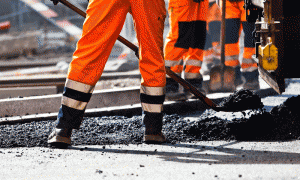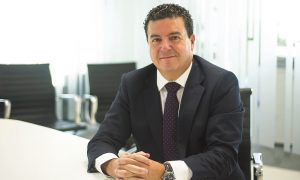Building the future of railway
Marcos Dorao, Middle East BD director, ACCIONA,on the latest developments in railway infrastructure development

Throughout its long history, the railway has proven to be one of the fastest, most efficient, most comfortable and most sustainable means of transport. As a result of constant research and innovation, its relevance in the transport infrastructure of a country has not stopped increasing during the last decades. Besides, we cannot forget that railway is the form of ground transport with the lowest accident rate and an environmental impact that exceeds only the bike.
Factors such as the consolidation of high speed, where technical complexity is huge, or the commitment of many cities to the metro and tram as clean and sustainable alternatives have posed new challenges in the construction of this type of infrastructure.
To face them, in ACCIONA we have more than 100 years of experience in the construction of railway infrastructure, during which we have left our mark on hundreds of projects. Throughout this time, we have built more than 3,000km of railways, more than 100 stations and facilities, and more than 600km of tunnels, which represents more than $9bn in tunnel projects over the last fifteen years across the world. In other words, more than 35.3m travellers per year.
We cover every stage of a railway project, from feasibility studies (technical and financial), planning studies, preliminary and detail design, to works supervision and construction, financing, and operations and maintenance (including new stations, maintenance facilities, tracks, rail and non-rail facilities, as well as rehabilitation and improvement of railway facilities currently in service).
The technical complexity of building tunnels and viaducts in railway lines breaks down into myriad engineering tasks, drawing on all our experience in this expertise. We have become a sought-after partner in making such ventures a success.
For tunnel construction, we use the latest techniques, such as tunnel boring machines (TBMs) and the innovative system of the two-component mortar technique.
The technological evolution of tunnelling machines, which accelerated at the end of the 19th century and finally took off in the first half of the 20th, contributed greatly to the expansion of ground transport worldwide. The excavation of tunnels to break through mountain ranges or circumvent difficult passes facilitated the ferrying by rail and road of passengers and freight, with their subsequent social and economic benefits.
The construction of this new world would not have been possible without tunnel boring machines, which would be nothing more than science fiction if it were not for a handful of companies that have been designing, every day for many years now, veritable works of art in the name of engineering.
We used TBMs to build two emblematic tunnels in Spain, the Guadarrama and Pajares tunnels, both huge milestones for engineering with respect to the technical problems overcome using ad hoc solutions conceived especially for the job. Indeed, the Guadarrama tunnel was the fifth longest of its type in Europe and eighth in the world in 2009. Those at Pajares were the sixth longest railway tunnels in Europe and 10th worldwide that same year.
One of the crucial factors when working with tunnelling machines is choosing or adapting the right machine for each lay of the land. The first step is to determine what kind of earth the machine will come up against. For example, if it consists of competent rock, the main problem will be the hardness or degree of resistance of the element. In contrast, in an environment where water is present, the difficulty will reside in establishing a front for the excavation.
To meet all these challenges in any location in the world, we have different types of TBMs: open-type main beams, single shield, double shield, earth pressure balance, hydro shield and so on. Our engineers and technicians are able to adapt them to any eventuality a project presents. In production terms, our tunnelling machines are powerful beasts, boring through over 1,000m of rock a month.
The innovative system of the two-component mortar technique successfully used by us on several projects is extremely useful in difficult terrain that is technically very complex in terms of excavation. The key to success is to inject a mortar made up of two components that react when they come into contact with each other, causing the mortar to set and harden quickly, giving the terrain immediate stability.
The use of two-component mortar provides a highly waterproof layer with greater plasticity, less settling or movement of cladding during construction, and greater impermeability against ground water, among many other benefits.
With our own patent on a launched deck bridge-building system and a constant process of technological evolution, we built the longest viaducts with this system in Spain, able to transport up to 30,000 metric tons in weight. Although this solution has served as the base for building many viaducts of our portfolio, we have built viaducts employing other solutions, such as decks built with successive cantilevers, mixed decks, prefabricated decks and those using self-supporting higher and lower arch centring.
Learning about international best practices and benefiting from international expertise play important roles in sustainable development, especially in light of the transformation towards an economy based on knowledge and innovation.
The UAE has developed a clear vision as well as a carefully planned strategy to play a leadership role in the field of rail transport infrastructure. This will be achieved through regional and international collaboration, developing and reshaping policies and enacting laws to promote efficiency as well as safety in this vital sector.
The UAE, along with Saudi Arabia, accounts for a huge chunk of the $69bn of rail projects under construction in the GCC. In other words, fly on rails towards the transition to renewable energies and the evolution of new mobility models. The reason is very simple: a combination of sustainability, safety and energy efficiency unattainable for other means of transport. Cities integrated into a well-developed and well-maintained railway infrastructure can stimulate development through the fluid exchange of people, goods and business.

























